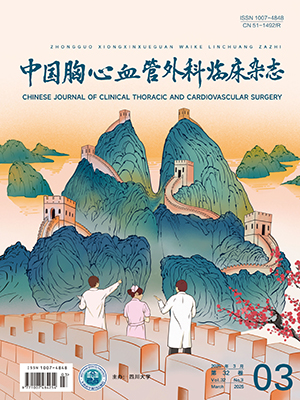| 1. |
Barta JA, Powell CA, Wisnivesky JP. Global epidemiology of lung cancer. Ann Glob Health, 2019, 85(1): 8.
|
| 2. |
Zhang XC, Wang J, Shao GG, et al. Comprehensive genomic and immunological characterization of Chinese non-small cell lung cancer patients. Nat Commun, 2019, 10(1): 1772.
|
| 3. |
Duan Y, Liu G, Sun Y, et al. COL6A3 polymorphisms were associated with lung cancer risk in a Chinese population. Respir Res, 2019, 20(1): 143.
|
| 4. |
Hsieh CP, Hsieh MJ, Wu CF, et al. Prognostic factors in non-small cell lung cancer patients who received neoadjuvant therapy and curative resection. J Thorac Dis, 2016, 8(7): 1477-1486.
|
| 5. |
Rattner JB, Rao A, Fritzler MJ, et al. CENP-F is a.ca 400 kDa kinetochore protein that exhibits a cell-cycle dependent localization. Cell Motil Cytoskeleton, 1993, 26(3): 214-226.
|
| 6. |
Sang M, Wu M, Meng L, et al. Identification of epithelial-mesenchymal transition-related circRNA-miRNA-mRNA ceRNA regulatory network in breast cancer. Pathol Res Pract, 2020, 216(9): 153088.
|
| 7. |
An F, Zhang Z, Xia M. Functional analysis of the nasopharyngeal carcinoma primary tumorassociated gene interaction network. Mol Med Rep, 2015, 12(4): 4975-4980.
|
| 8. |
Koon N, Schneider-Stock R, Sarlomo-Rikala M, et al. Molecular targets for tumour progression in gastrointestinal stromal tumours. Gut, 2004, 53(2): 235-240.
|
| 9. |
Li R, Wang X, Zhao X, et al. Centromere protein F and Forkhead box M1 correlation with prognosis of non-small cell lung cancer. Oncol Lett, 2020, 19(2): 1368-1374.
|
| 10. |
Sun CC, Li SJ, Hu W, et al. Comprehensive analysis of the expression and prognosis for E2Fs in human breast cancer. Mol Ther, 2019, 27(6): 1153-1165.
|
| 11. |
Yang X, Zhu S, Li L, et al. Identification of differentially expressed genes and signaling pathways in ovarian cancer by integrated bioinformatics analysis. Onco Targets Ther, 2018, 11: 1457-1474.
|
| 12. |
Shang S, Wang L, Su Y, et al. Local therapy combined with chemotherapy versus chemotherapy for postoperative oligometastatic non-small-cell lung cancer. Future Oncol, 2019, 15(14): 1593-1603.
|
| 13. |
Herbst RS, Morgensztern D, Boshoff C. The biology and management of non-small cell lung cancer. Nature, 2018, 553(7689): 446-454.
|
| 14. |
Ko EC, Raben D, Formenti SC. The integration of radiotherapy with immunotherapy for the treatment of non-small cell lung cancer. Clin Cancer Res, 2018, 24(23): 5792-5806.
|
| 15. |
宁晔, 谢冬, 佘云浪, 等. 2020版NCCN肺癌筛查指南解读. 中国胸心血管外科临床杂志, 2020, 27(3): 251-254.
|
| 16. |
Wu SG, Shih JY. Management of acquired resistance to EGFR TKI-targeted therapy in advanced non-small cell lung cancer. Mol Cancer, 2018, 17(1): 38.
|
| 17. |
Yu B, Chen L, Zhang W, et al. TOP2A and CENPF are synergistic master regulators activated in cervical cancer. BMC Med Genomics, 2020, 13(1): 145.
|
| 18. |
Sun J, Huang J, Lan J, et al. Overexpression of CENPF correlates with poor prognosis and tumor bone metastasis in breast cancer. Cancer Cell Int, 2019, 19: 264.
|
| 19. |
Aytes A, Mitrofanova A, Lefebvre C, et al. Cross-species regulatory network analysis identifies a synergistic interaction between FOXM1 and CENPF that drives prostate cancer malignancy. Cancer Cell, 2014, 25(5): 638-651.
|
| 20. |
Shahid M, Lee MY, Piplani H, et al. Centromere protein F (CENPF), a microtubule binding protein, modulates cancer metabolism by regulating pyruvate kinase M2 phosphorylation signaling. Cell Cycle, 2018, 17(24): 2802-2818.
|
| 21. |
Cai C, Wang W, Tu Z. Aberrantly DNA methylated-differentially expressed genes and pathways in hepatocellular carcinoma. J Cancer, 2019, 10(2): 355-366.
|
| 22. |
Yang X, Miao BS, Wei CY, et al. Lymphoid-specific helicase promotes the growth and invasion of hepatocellular carcinoma by transcriptional regulation of centromere protein F expression. Cancer Sci, 2019, 110(7): 2133-2144.
|
| 23. |
Dai Y, Liu L, Zeng T, et al. Characterization of the oncogenic function of centromere protein F in hepatocellular carcinoma. Biochem Biophys Res Commun, 2013, 436(4): 711-718.
|
| 24. |
Peterka M, Kornmann B. Miro-dependent mitochondrial pool of CENP-F and its farnesylated C-terminal domain are dispensable for normal development in mice. PloS Genet, 2019, 15(3): e1008050.
|




